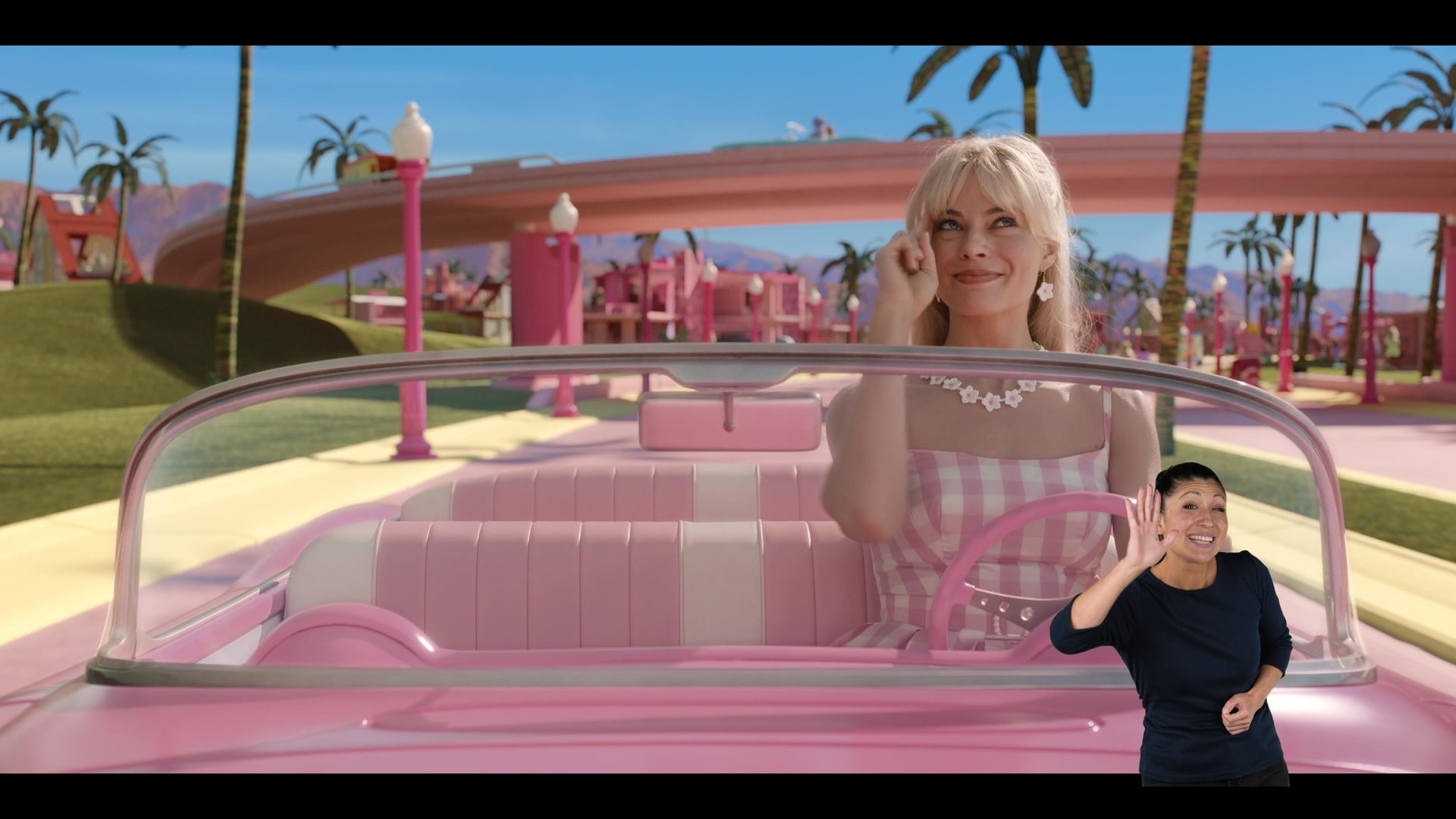
Leila Hanaumi is Barbie. And Ken. And, well, every character in the ASL version of the Golden Globes award-winning “Barbie” movie. The sign language performer signs for every cast member who speaks or sings in the film “Barbie with ASL,” a feat deserving of its own Golden Globe.
“Barbie with ASL” was, perhaps, destined to garner attention. While text captions are an option on most streaming platforms, it’s rare that a major motion picture is offered in ASL — which is unfortunate, since ASL provides a more holistic experience for Deaf viewers, offering more context, emotion, and tone. In fact, this is the first Warner Bros. movie that has an ASL option.
And at the helm of this milestone, Hanaumi became a star in her own right, garnering powerful real-time reactions on social media from Deaf viewers impacted by her work. “Representation is that sigh of breath when you feel seen,” Hanaumi tells POPSUGAR. And it appears the Deaf community is exhaling in droves, thanks to “Barbie with ASL” and more specifically, Hanaumi’s interpretation.
It’s both touching and overwhelming, she tells POPSUGAR. “I’m seeing stories of Deaf elders who grew up without captions and always had to guess what was being said onscreen, and they can’t believe this type of access exists. I’m seeing videos of little Deaf girls whose faces just light up when they realize a Deaf woman is onscreen providing a performance for them.”
Prior to “Barbie with ASL,” Hanaumi had never professionally interpreted an entire movie before.
“Even if I had, it would probably not have been as challenging as ‘Barbie,’ which was filled with rapid dialogue and punchy political and social messages,” Hanaumi tells POPSUGAR.
Despite the challenge, it’s the content of the film that drew her to the project. “It resonated with me as a woman, a mother, a daughter, and in the end, simply as a human,” Hanaumi says. “It was clever, deep, funny, and heart-wrenching. Like Barbie herself, the movie is everything.”
When Hanaumi was initially approached about the role, “it was definitely a ‘whoa’ kind of moment,” she says — the kind that only comes around once and takes you a second to wrap your head around. Hanaumi predominantly worked on ASL song covers prior to her big “Barbie” break, signing popular hits like Beyonce’s “Break My Soul” and “Clock” by Coldplay — posting them on social media to spread awareness and as a form of artistic expression.
“I hope that people realize that Deaf people and sign language have a place in the world — we always have.”
Being born profoundly deaf to Deaf parents, Hanaumi’s first language was ASL, followed by English. She grew up bilingual, attending a Deaf school in Fremont, California where she was fully immersed in a language-rich environment and participated in ASL storytelling festivals. She developed a profound connection to music, listening to it through her hearing aid — “but also all the other ways music is experienced — through feeling the vibration, watching the visuals, and reading the lyrics,” Hanaumi tells POPSUGAR. “I was immediately enamored when I first watched older Deaf people perform songs in ASL and it’s one of my greatest joys to be able to perform songs for other people today.”
The “Barbie” movie presented Hanaumi with a unique opportunity, not only to take her love for ASL covers to the big screen, but to grant a kind of access to the Deaf community that is often overlooked, she says.
Growing up, Hanaumi’s mom or teachers would interpret the movies she watched at home or school in real time. It’s something she does for her own children today, who are Deaf, when a movie isn’t offered in ASL — which, most of the time, it isn’t. To be able to “provide that kind of access and experience to other Deaf children and people in their own homes across the country is surreal,” she says. Seeing an ASL version of such a popular movie live alongside the original version on a major streaming app is powerful, but it’s also a reminder that this should, and could, be the norm, not the exception.
In order to prepare for the role, Hanaumi watched “Barbie” over and over — at least 50 times, she tells POPSUGAR. Each time, it moved her to tears. “The movie got better with every rewatch,” Hanaumi says.
She also rehearsed virtually for 3 weeks with ASL coach, Jac Cook to ensure that every emotion, quip, and nuance was communicated, always a challenge for language interpreters. For example, in ASL there are three different variations for the word Barbie, depending on what you’re referring to (stereotypical Barbie, Barbies plural, or Barbie, the doll); part of Hanaumi’s practice was ensuring she was using the correct variations at the right times.
The entire ASL performance was filmed over a total of three days in person using a green screen. The end product: a masterfully done interpretation that represents the kind of inclusion and accessibility that is not only feasible, but innately deserved.
“I hope this encourages everyone to learn to sign. I hope this inspires the next level of accessibility and inclusivity in our society. I hope that people realize that Deaf people and sign language have a place in the world — we always have,” Hanaumi says.
